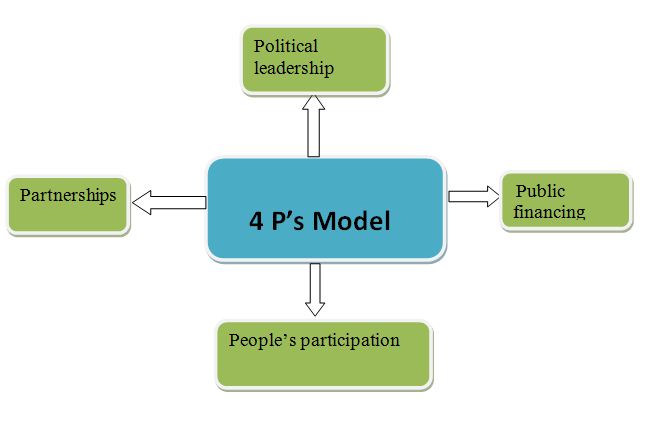April 19, 2024
India’s 4 P Model: People and the Planet
Why in News ? The World Bank has come up with the new vision of “a world free of poverty on a livable planet”.
- In this slogan , it is important to learn from India’s 4Ps (Delhi declaration) since they are directly relevant to the successful implementation of large-scale transformational programmes.
· In ensuring that no country should have to choose between fighting poverty and fighting for the planet, India’s 4 P model can be adopted.
What is India’s 4 P Model ?
The first P (political leadership) :
· It is perhaps the fulcrum of driving change and impact on the ground.
· India’s SBM restored dignity, health and security to communities, especially women and girls.
· The declaration of the goal to achieve a clean India was followed by the creation of institutional and financing mechanisms to implement this massive programme in a federal context.
· The PM also closely monitored the progress of the SBM on the ground, including by the use of technology.
The second P (public financing):
· It is a direct follow-up to the first, through a high-level policy decision to finance the implementation of sanitation across the country.
· In a context where scarce public resources had to be deployed for national developmental priorities, it took a discerning leadership to appreciate that investment in sanitation influenced both poverty reduction and led to an improvement in the quality of life for India’s population.
The third P (partnerships):
· It was also very important. The SBM was never implemented as a sarkari programme but in partnership with international bodies such as the World Bank, Unicef, the Bill and Melinda Gates Foundation, non-governmental organisations, community-based organisations, state and district administrations, local bodies, panchayats, school children across the country.
| · The fourth P (people’s participation) became the hallmark of the SBM, which had captured the imagination of the nation.
· Each of the six lakh villages in India decided to take it upon itself to become open defecation free. · Rural communities took matters into their own hands and engaged in mass movements to encourage all households to build toilets and use them. · Unless communities took matters into their own hands and owned and implemented it, the outcomes would not stick. |

January 30, 2025
January 20, 2025
January 14, 2025
